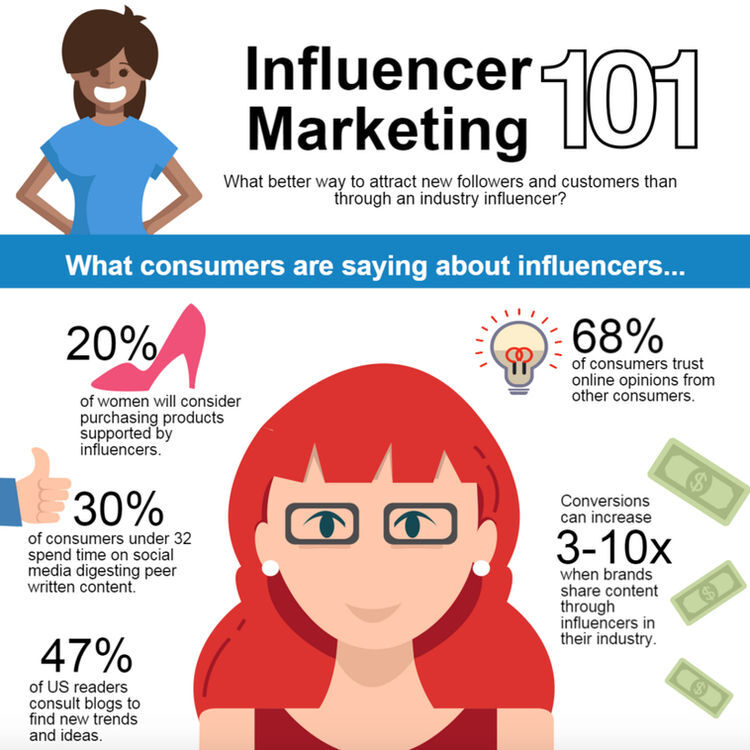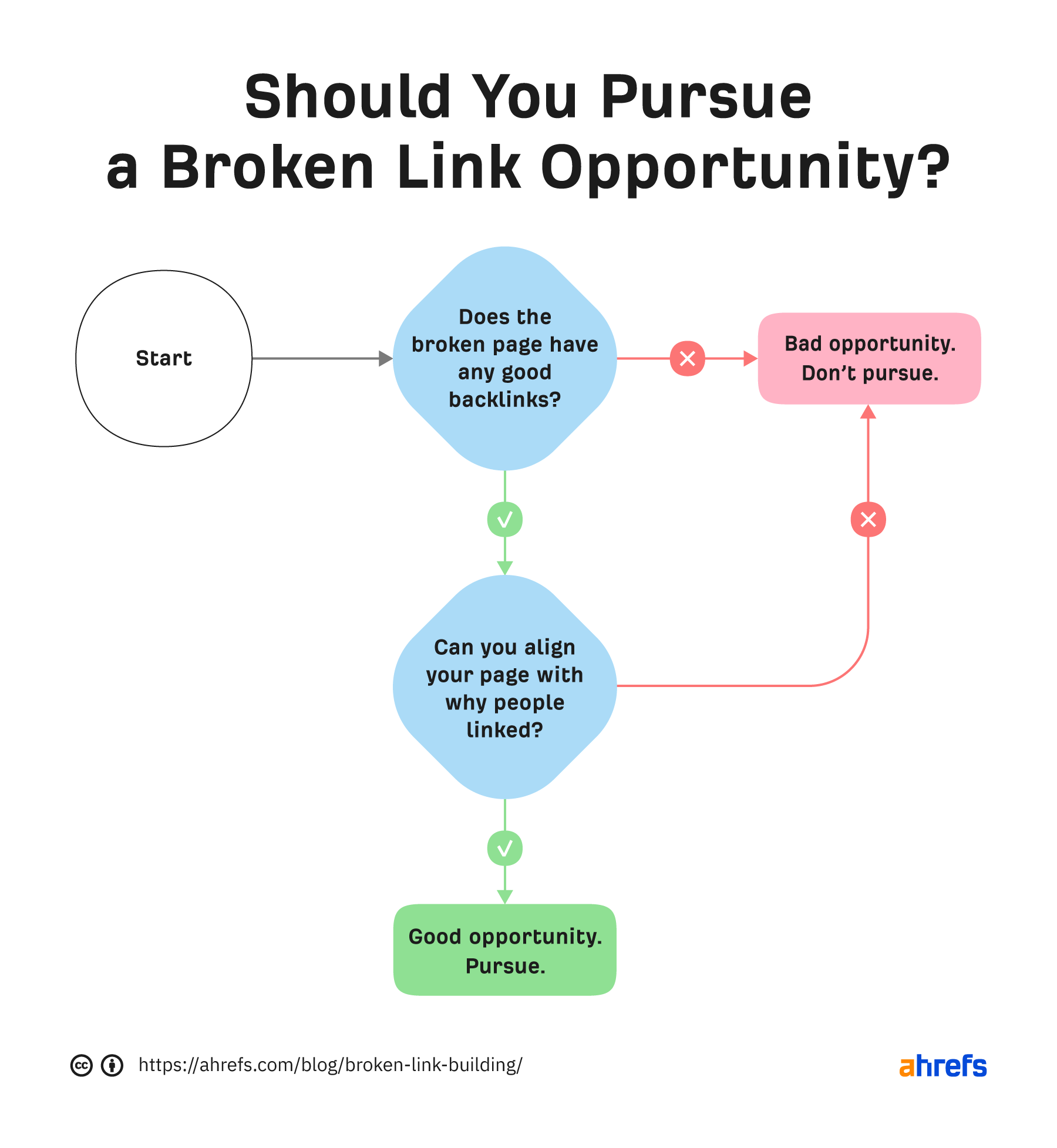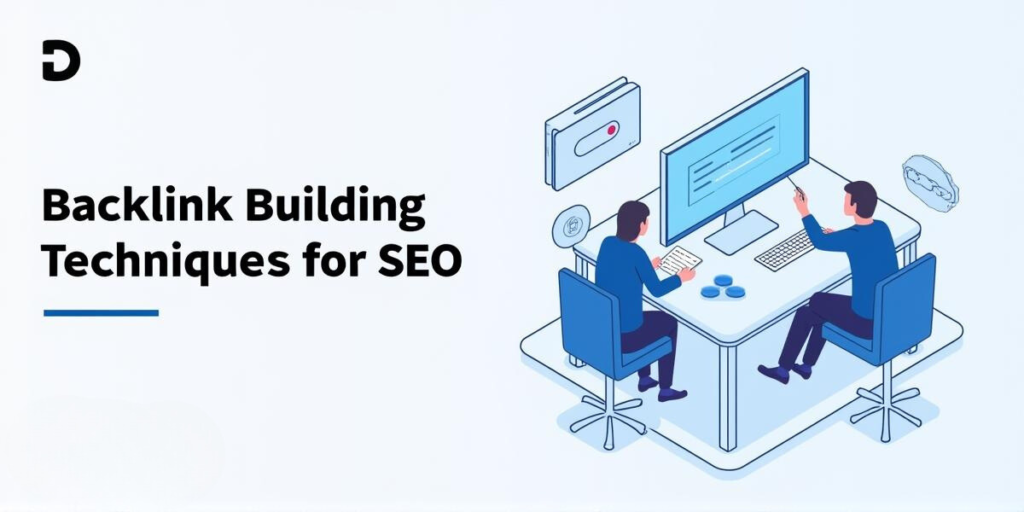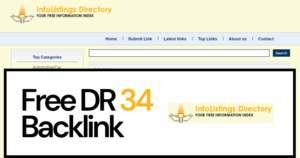Backlinks are a key factor in SEO, helping websites rank higher in search engine results. They act like votes of confidence from one site to another, showing search engines that a site is credible and relevant. High-quality backlinks from authoritative sources can boost search rankings and drive referral traffic. There are various types of backlinks, such as editorial backlinks, guest post backlinks, and niche edits backlinks. It’s crucial to focus on the quality of backlinks rather than quantity. Building relationships with industry pros can also lead to valuable backlinks. Monitoring and disavowing low-quality links helps maintain a healthy backlink profile, improving your site’s visibility and authority.
Guest Posting

Credits: rangeflow.com
Identify Relevant Blogs
To start with guest posting, find blogs that are relevant to your industry or niche. This ensures that your content will be valuable to their audience and that the backlinks you earn will benefit your SEO. Use tools like Google search and social media to locate these opportunities. For instance, if you’re in the tech industry, seek out tech blogs that regularly accept guest posts.
Craft Quality Content
Once you’ve identified potential blogs, it’s time to create quality content. The content should be insightful, well-researched, and provide value to the readers. Make sure it aligns with the style and tone of the blog you’re targeting. Include relevant keywords organically within your post. For example, if writing for a digital marketing blog, consider topics like ‘Effective SEO Strategies for Small Businesses’.
Reach Out to Blog Owners
After crafting your content, reach out to the blog owners. Craft a professional and concise email pitch. Introduce yourself, explain why you want to contribute to their blog, and highlight the benefits their readers will gain from your post. Attach a draft or outline of your post if required. Personalizing your pitch will increase your chances of getting accepted.
- Identify Relevant Blogs
- Craft Quality Content
- Reach Out to Blog Owners
- Build a Portfolio of Your Work
- Follow Up with Blog Owners
- Track and Measure Results
- Participate in Blog Communities
Influencer Outreach

Credits: brandwatch.com
To start with influencer outreach, you need to find industry influencers who have a significant following and authority in your niche. Use tools like BuzzSumo or simply explore social media platforms to identify these key figures. Look for individuals who consistently share valuable content and engage with their audience.
Once you’ve identified potential influencers, engage with them on social media. Like, comment on, and share their posts to get on their radar. Genuine engagement can help build a relationship over time. Make sure your interactions are meaningful and add value to the conversation.
When you’re ready to reach out, send personalized requests to the influencers. Avoid generic messages—take the time to craft a unique approach. Mention specific posts or aspects of their work that you admire. Clearly explain why collaborating would be beneficial for both parties. Personalization can significantly increase the chances of your request being accepted.
Broken Link Building

Credits: ahrefs.com
Identifying broken links is the first step in broken link building. Use tools like Check My Links, Dead Link Checker, or Screaming Frog to scan websites for broken links. You can also manually check pages in your niche by inspecting hyperlinks and ensuring they lead to a valid page. Maintain a list of the broken links you encounter.
Once you’ve identified broken links, the next step is to create replacement content. The content you create should be high-quality, relevant, and provide value to the readers. It can be an article, blog post, or resource page connected to the topic of the original broken link. Make sure your content is hosted on your website and easily accessible.
After creating replacement content, contact the site owners of the websites with broken links. Craft a courteous email explaining the broken link you’ve found and suggesting your content as a useful replacement. Highlight how your content can be beneficial for their site visitors. Be concise and provide the exact URL of the broken link and your replacement content.
Resource Page Link Building
To get started with resource page link building, you need to identify resource pages that are relevant to your niche. Use search engines with queries like ‘keyword + resources’ or ‘keyword + useful links’. Tools like Ahrefs or Moz can also help in finding these pages. Online forums and social media groups in your industry might also share resource pages that can be valuable.
Once you have a list of potential resource pages, evaluate the quality of each page. Check the domain authority, traffic stats, and relevance to your content. Look for signs of an active and updated page. Avoid pages that are packed with irrelevant links or appear to be link farms. The aim is to find high-quality pages that will boost your site’s credibility.
After evaluating and narrowing down your list, reach out to the webmaster or page owner to submit your content. Personalize your email by addressing the recipient by name, and explain why your content would be a valuable addition to their resources. Include a brief description of your content and its benefits, along with a direct link. Be polite and concise, and follow up after a week if you don’t receive a response.
Building Relationships
Engaging in forums is a valuable technique for building relationships. By actively participating in online communities relevant to your industry, you can connect with like-minded individuals and potential partners. Sharing your insights, answering questions, and contributing to discussions helps establish your expertise and build trust. Over time, these interactions can lead to opportunities for backlinks from forum members who appreciate your contributions.
Attending industry events, whether they are conferences, trade shows, or webinars, provides a great chance to network with other professionals. These events can help you build strong relationships with key people in your field. Face-to-face interactions often lead to collaborations and backlinks as you meet individuals who are interested in your content or who might mention your work on their platforms. Don’t forget to exchange contact information and follow up after the event to keep the connection alive.
Collaborating on content with other experts or influencers in your niche can be extremely beneficial for link building. When you co-create articles, videos, or podcasts, both parties can share the content on their respective channels, gaining access to each other’s audiences. For example, you could write a guest post on a partner’s blog or conduct an interview with an industry leader. Such collaborations not only enhance your visibility but also increase the chances of earning high-quality backlinks.
Social Media Promotion
Sharing your content on social media platforms like Facebook, Twitter, LinkedIn, and Instagram can significantly enhance visibility and attract inbound links. By regularly posting your articles, blog posts, and other content pieces, you can engage with a broader audience and drive more traffic to your website. Remember to craft engaging captions and incorporate visually appealing images or videos to make your posts stand out.
Leveraging hashtags is a powerful way to increase the reach of your social media posts. By using relevant and trending hashtags, you can ensure that your content appears in front of users who are interested in similar topics. For example, if your content is about digital marketing strategies, including hashtags like #DigitalMarketing, #SEOTips, or #MarketingStrategy can attract more attention and engagement. This, in turn, can lead to more shares and potential backlinks.
Joining relevant groups and communities on social media platforms can also help you build valuable connections and gain backlinks. Participate actively in groups related to your industry by sharing your insights and answering questions. This will establish you as an authority in your field and encourage others to share your content. For instance, on LinkedIn, you can join professional groups, while on Facebook, you might find niche groups that align with your content.
Utilize Infographics
Creating informative infographics is a powerful way to generate inbound links. Infographics are visually appealing and often shared widely, providing value to your audience while increasing the chances of earning backlinks. Ensure that your infographics present complex data in an easy-to-understand format. For example, if you run a fitness blog, an infographic showing a 7-day meal plan could be both informative and engaging.
After creating your infographic, sharing it on Pinterest can significantly extend its reach. Pinterest is a highly visual platform where users are always on the lookout for compelling images and graphics. By crafting a compelling Pinterest description and using relevant hashtags, you can attract more users to your infographic. Additionally, link back to your site from the infographic post to drive traffic and create an external link.
Submitting your infographics to infographic directories is another effective strategy to gain backlinks. Many websites curate and feature infographics, and being listed on these sites can drive traffic and enhance your backlink profile. Directories like Visual.ly, Infographic Directory, and Submit Infographics are great places to start. Ensure you include relevant keywords and a link back to your website when submitting to maximize SEO benefits.
Directory Submissions
Identify Authoritative Directories: Finding the right directories is crucial for effective link building. Start by targeting well-established, authoritative directories that are respected in your industry. Examples include DMOZ, Yahoo Directory, and local business directories specific to your region or field.
Ensure Accurate Listings: When submitting to directories, double-check your business information. Ensure that the name, address, phone number, and website URL are correct. Inaccurate listings can confuse search engines and potential customers, affecting your SEO efforts.
Monitor Submission Results: After submitting your site to directories, it’s important to monitor the results. Keep a checklist or spreadsheet to track where you’ve submitted and follow up to ensure that your links get approved. Regularly review your listings to update any changes and maintain consistency across all directories.
HARO (Help a Reporter Out)
One effective strategy for building backlinks is using HARO (Help a Reporter Out). By signing up for HARO, you get access to a platform where journalists reach out to sources for quotes and insights. This provides a unique opportunity to gain valuable links from high-authority websites.
Once you’ve signed up, it’s crucial to respond to relevant queries promptly. Journalists are typically on tight deadlines, so timely and concise responses increase your chances of being featured. Ensure your replies are informative and directly address the questions asked. Adding a brief bio with your credentials can also help establish your expertise.
Don’t forget to follow up with reporters after submitting your responses. This follow-up can be as simple as a short, polite email reiterating your interest and availability for any additional information. Building a good relationship with journalists can lead to more opportunities for backlinks in the future.
| Step | Description |
|---|---|
| Step 1 | Sign Up for HARO |
| Step 2 | Respond to Queries |
| Step 3 | Follow Up with Reporters |
Skyscraper Technique
To apply the Skyscraper Technique, start by identifying the top content in your niche. Use tools like Ahrefs or BuzzSumo to find articles or pages that are popular and have many backlinks. Look for content that resonates well with your target audience and is highly shared on social media.
Next, create better content by offering more value. This could mean making your piece more comprehensive, updating it with recent information, or adding original research or data. For example, if the top content is an article titled ’10 Tips for Healthy Eating,’ you could create a more detailed version like ’20 Proven Tips for Healthy Eating with Scientific Evidence’. Ensure that your content is visually appealing, well-structured, and easy to read.
Finally, reach out to link sources that are already linking to the original content. Send them a polite email explaining that you have created an updated or more comprehensive version of the article they linked to. Highlight why your content is valuable and ask if they would consider linking to your piece instead. Personalizing your outreach and showing genuine interest can improve your chances of getting backlinks.
Claim Unlinked Mentions
set up alerts to stay informed whenever your brand or relevant keywords are mentioned online. Use tools like Google Alerts or Mention to receive notifications. This proactive approach will help you quickly identify potential unlinked mentions of your brand or content.
Once you’ve set up alerts, it’s time to find unlinked mentions. Review the notifications you receive and check if the mentions include backlinks to your site. Focus on instances where your brand, products, or content are discussed but not linked back to your website.
After identifying unlinked mentions, contact the site owners or authors to request backlinks. A polite email explaining the value of linking back to your site can be effective. Highlight how a backlink would benefit their audience by providing additional context or information. Make your request easy to fulfill by specifying the exact URL they should link to.
Local Listings and Citations
Register on Google My Business to improve your presence on local search results. Having a well-maintained profile can help attract potential customers and provide them with essential information like your business hours, contact information, and location. Ensure your business name, address, and phone number (NAP) are consistent with your website and other listings.
Submit to local directories to increase your website’s authority and visibility. Look for reputable local directories in your industry or region and provide accurate and detailed information about your business. This helps search engines verify your business’s legitimacy and can improve your ranking in local search results. Examples of popular local directories include Yelp, Yellow Pages, and Bing Places.
Encourage customer reviews to enhance your online reputation and attract more customers. Positive reviews can boost your credibility and influence potential clients to choose your services. Ask satisfied customers to leave a review on your Google My Business profile or other review platforms, and always respond to reviews, whether positive or negative, to show that you value customer feedback.
Content Syndication
Choosing the right syndication platforms is crucial for maximizing your content’s reach. Opt for reputable sites like Medium, LinkedIn Pulse, and industry-specific platforms. These sites have a large audience and can help you get your content in front of the right people. Evaluate platforms based on their audience, domain authority, and relevance to your niche.
Repurpose your best content to keep it fresh and engaging. This can include turning a blog post into a video, an infographic, or a podcast. It helps in reaching different audience segments who consume content in various formats. For instance, a well-researched blog post can be broken down into a series of social media posts or turned into a comprehensive guide.
Tracking the performance of your syndicated content is essential to understand its impact. Use tracking tools like Google Analytics and UTM parameters to see which platforms drive the most traffic and engagement. Analyze metrics such as page views, bounce rate, and conversion rates to determine the effectiveness of your syndication strategy. Regularly review and adjust your approach based on these insights.
Case Studies and Testimonials
Developing case studies is a powerful way to showcase your expertise and success with previous clients. To create a comprehensive case study, detail the challenges faced by the client, the strategies you implemented, and the resulting outcomes. Use quantitative data whenever possible to illustrate the effectiveness of your work. For instance, if a client saw a 50% increase in organic traffic after your intervention, make sure to highlight this achievement. These case studies can help build trust and provide concrete evidence of your skills to potential clients.
Gathering client testimonials is another effective method to enhance your online reputation. Reach out to satisfied clients and ask them for a brief statement about their experience working with you. These testimonials should emphasize how your services solved their problems and improved their results. Including specific details can make the testimonials more credible and impactful. For example, a client might say, ‘Thanks to the SEO strategies implemented by XYZ Agency, our website’s search engine ranking improved significantly within three months.’
Promoting these case studies and testimonials on related websites can further boost your credibility. Look for industry-specific forums, blogs, or websites that accept guest posts or user-submitted content. Sharing your success stories on platforms that target your niche audience can drive more traffic to your site and attract potential clients. Additionally, consider leveraging social media to share these case studies and testimonials to reach a broader audience and foster engagement.
Participate in Interviews
Find Interview Opportunities: Start by identifying platforms, blogs, and podcasts that align with your niche. Use social media and professional networks like LinkedIn to connect with industry influencers and request interview opportunities. Websites like Help a Reporter Out (HARO) and SourceBottle can also help you find journalists looking for expert opinions.
Prepare Engaging Content: Before the interview, research the host and their audience. Understand what kind of content resonates with them. Prepare answers to common questions and think of unique insights you can provide. Practice delivering your content in a clear and engaging manner. This not only helps in making a good impression but also increases the likelihood of your interview being shared widely.
Share the Published Interview: After your interview is live, make sure to leverage your own channels to promote it. Share the link on your social media platforms, blog, and in newsletters. Tag the interview host to show your appreciation and increase visibility. Encourage your followers to engage with the content and share it further.
Niche Edits
Niche edits are a strategic link building technique where you find existing content that is relevant to your website’s niche and then work to secure backlinks within that content. The first step in this process is to find suitable content. This involves identifying articles, blog posts, or other content types that align closely with your niche. Tools like Ahrefs, Moz, or SEMrush can be valuable for finding these opportunities. Additionally, look for content that has a good domain authority and is actively maintained.
Once you have identified suitable content, the next step is to offer valuable edits. Reach out to the content owners with suggestions that enhance their content’s value. These could be updates, corrections, or additional information that improves their article. Ensure your edits are genuinely beneficial and provide a strong argument for why your addition improves the content. Example: If they have a post about ’10 Tips for Healthy Living’, you might suggest adding a new tip that links to your detailed article on that specific topic.
After offering valuable edits, the final step is to secure backlinks. When your suggestions are accepted, ensure that the content owner hyperlinks back to your site naturally within the article. This not only boosts your SEO through quality backlinks but also supports the reader with valuable additional resources. Building trust and maintaining a professional relationship with the content owners can also open doors for future link building opportunities.
Forum Participation
To start with, join relevant forums that are related to your industry or niche. Choose forums that have a good user base and high interaction rates. These communities are more likely to value your input, making your efforts more worthwhile.
When you participate in a forum, focus on contributing valuable information. Share your knowledge and offer help to others. This builds your reputation within the community. Don’t just spam links; quality contributions will earn you respect and trust from other members.
Share your links thoughtfully. Ensure that any links you provide are pertinent to the discussion and offer additional value. This can include linking to your own blog posts, articles, or other helpful resources. Avoid over-posting links, as this can come off as self-promotional and may lead to penalties from the forum administrators.
Blog Commenting
Finding high-authority blogs is essential for effective blog commenting. You need to identify influential blogs in your niche that have high domain authority and active engagement. Websites like Ahrefs or Moz can help you identify these high-authority blogs. Once you’ve identified them, make a list and prioritize those that align closely with your content and readership goals.
When leaving comments, it’s important to be thoughtful and add value to the conversation. Focus on comments that encourage further discussion. This not only shows that you’ve read the post thoroughly but also helps you build a positive relationship with the blog owner and their readers. Avoid generic comments like, ‘Great post!’ Instead, aim for detailed feedback or share your own experiences related to the topic. For example, if the blog post is about SEO trends, you could mention a particular strategy that’s worked well for you and why.
Including relevant links in your comments can increase traffic to your website, but it needs to be done carefully to avoid looking spammy. Ensure that the link is directly related to the blog post and adds further value to the readers. For instance, if the post is discussing advanced SEO techniques, and you have a comprehensive guide on the topic, share it. Always disclose your relationship to the link (e.g., ‘I recently wrote an article that expands on this topic’) to maintain transparency and trust.
Press Releases
Write newsworthy content that grabs attention. Ensure your press release covers relevant, timely topics. Highlight key points clearly. Craft a compelling headline that communicates the core message. A well-written press release can attract journalists and bloggers, who might then share it on their media platforms.
Distribute your press release to media outlets to increase its visibility. Use online press release distribution services like PR Newswire or Business Wire. Target local and national news organizations, industry-specific publications, and relevant online forums. Distribute through social media channels to reach a wider audience.
Monitor press coverage to gauge the effectiveness of your press release. Use tools like Google Alerts or Mention to track where your press release is being mentioned. Analyze the coverage to understand the reach and impact. This data is crucial for refining future press releases and enhancing your link-building strategy.
Frequently Asked Questions
1. What is link building and why is it important for SEO?
Link building is the process of getting other websites to link to your site. It helps improve your site’s visibility on search engines, making it easier for people to find you.
2. Can too many backlinks harm my website?
Yes, if the backlinks are from low-quality or spammy sites, it can harm your website’s ranking. It’s better to focus on getting quality links from reputable sites.
3. How can I get backlinks from high-authority websites?
Create high-quality, shareable content, build relationships with influencers, and consider guest posting on reputable blogs. These efforts can help attract backlinks from high-authority sites.
4. What’s the difference between dofollow and nofollow links?
Dofollow links pass on ‘link juice’ or SEO value to the site being linked, helping its SEO. Nofollow links, on the other hand, do not pass on SEO value but can still drive traffic to your site.
5. How often should I focus on link building for my website?
Link building should be a continuous effort. Regularly producing high-quality content and reaching out for backlinks can steadily improve your site’s SEO over time.
TL;DR Guest Posting: Identify relevant blogs, craft quality content, reach out to blog owners. Influencer Outreach: Find industry influencers, engage on social media, send personalized requests. Broken Link Building: Identify broken links, create replacement content, contact site owners.
Resource Page Link Building: Find resource pages, evaluate page quality, submit your content. Building Relationships: Engage in forums, attend industry events, collaborate on content.
Social Media Promotion: Share your content, leverage hashtags, join relevant groups. Utilize Infographics: Create informative infographics, share on Pinterest, submit to infographic directories.
Directory Submissions: Identify authoritative directories, ensure accurate listings, monitor submission results. HARO (Help a Reporter Out): Sign up for HARO, respond to queries, follow up with reporters.
Skyscraper Technique: Identify top content, create better content, reach out to link sources. Claim Unlinked Mentions: Set up alerts, find unlinked mentions, request backlinks.
Local Listings and Citations: Register on Google My Business, submit to local directories, encourage customer reviews.
Content Syndication: Choose syndication platforms, repurpose your best content, track syndication performance. Case Studies and Testimonials: Develop case studies, gather client testimonials, promote on related websites.
Participate in Interviews: Find interview opportunities, prepare engaging content, share the published interview.
Niche Edits: Find suitable content, offer valuable edits, secure backlinks.
Forum Participation: Join relevant forums, contribute valuable information, share your links thoughtfully.
Blog Commenting: Identify high-authority blogs, leave thoughtful comments, include relevant links. Press Releases: Write newsworthy content, distribute to media outlets, monitor press coverage.




